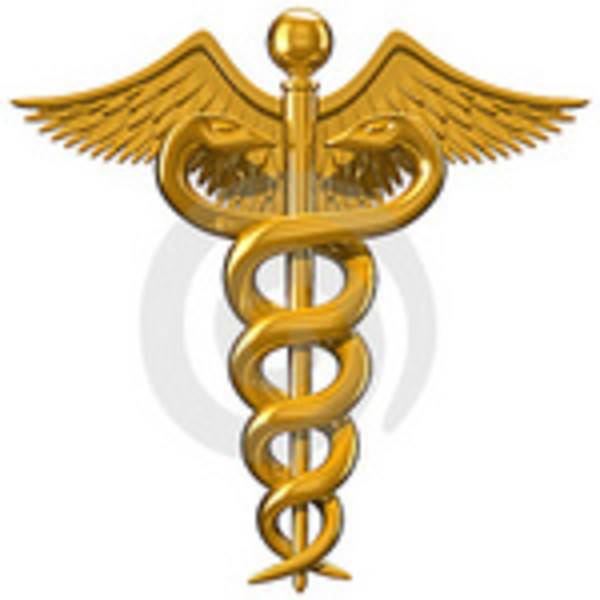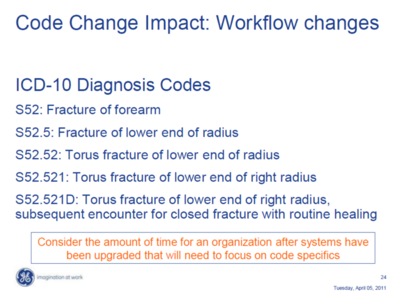On October 1, 2013, the US Deptment of Health and Human Services will expect all of America’s health care providers to have transitioned their business bookkeeping and transaction records to the latest World Health Organization (WHO) standards. Although the latest set of the so-called ICD codes (International Classification of Diseases), called ICD-10, were rolled out in 1992, a study by the Medical Group Management Association estimates that the cost for each U.S. hospital simply to change its forms and retrain its office managers could exceed $2 million.

Why the change? The term “disease” has been stretched somewhat since the ICD was first implemented after World War II. Now the system is being used to classify every kind of conceivable ailment; and now healthcare professionals and office managers are being expected to comprehend a system of codes that has expanded from just over 10,000 classifications (ICD-9) to potentially over 140,000 (ICD-10).

Here’s just one example, courtesy of the medical practitioner certification agency AAPC. The patient in this example has a raisin in her nose. Come 2013, in order for her office visit to be properly categorized for insurance purposes, and for the privacy provisions of the U.S. HIPPA law to be met, practitioners will need to know how to translate the old raisin-up-nose disease code 932 into the new code T17.1XXA. This translation, among others, qualifies as what one healthcare consultancy describes as “closely related.”
In light of the considerable retraining time that will still need to be implemented over the next 13 months, GE Healthcare announced today it is now rolling out its electronic health records management system, GE Centricity Business 5.0.
A 2010 survey of some 225,000 physicians’ offices nationwide paints the healthcare software market as completely wide open. GE Centricity ranks a very close second with a 15% share of the pie; but the leader, Epic EHR, takes only 17% of the market. If anyone’s going to make a play to break out of this market stalemate, it needs to be now.
So full HIPPA compliance with ICD-10 codes is step one of GE Centricity’s game plan. Step 2, announced last week, is an iPhone/iPad app for its cloud-based option for smaller providers, Centricity Advance.
Step 3 focuses on retraining, with an aim toward keeping costs low to stay competitive. Among the training materials being shared by GE Healthcare a presentation that includes this slide:

This details how the new ICD-10 coding system works, and just how nuanced healthcare workers should expect it to be. A simple forearm fracture, like the one coded here, may not be complete enough for some agencies unless it spells out the possible or likely causes in greater detail.
As the presentation explains, “The staff coding the diagnosis needs to know the specific information about the type and location of the fracture, as well as knowing whether the visit is a subsequent encounter. If there is documentation about how the patient suffered the broken arm, an external cause code can be included to further identify how the injury occurred. For example, a note stating that the patient was riding her bike on a bike path when she ran into a runner and fell off her bike resulting in the broken arm could be coded with V10.0 Pedal cycle driver injured in collision with pedestrian or animal in non-traffic accident.”
Some of this retraining material is being shown at a Centricity training conference in Boston today.

















